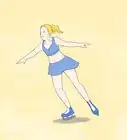This article was co-authored by wikiHow Staff. Our trained team of editors and researchers validate articles for accuracy and comprehensiveness. wikiHow's Content Management Team carefully monitors the work from our editorial staff to ensure that each article is backed by trusted research and meets our high quality standards.
There are 13 references cited in this article, which can be found at the bottom of the page.
wikiHow marks an article as reader-approved once it receives enough positive feedback. In this case, 92% of readers who voted found the article helpful, earning it our reader-approved status.
This article has been viewed 154,728 times.
Learn more...
Figure skating is a gorgeous, graceful sport that requires great physical and mental strength. To be a top-notch figure skater, you must have unfailing determination and flexibility beyond compare. Beyond that, you have to have the discipline to practice many times a week and the resilience to get back up in the face of failure, competition, and defeat. Don't be discouraged, though: if you're prepared to start as soon as possible, train your body, and practice with help and without, you're on your way to skating exquisitely.
Steps
Beginning a Training Regime
-
1Make the decision to begin. Have you been playing ice hockey since kindergarten, or have you never set foot on a rink? Whatever your current skill level is, you can improve, so don’t put yourself down if you’re just starting. Just start now! Most professional figure skaters started lessons at age four, as soon as they were steady and verbal enough to understand instructions.[1]
- Don't lose hope if you've already started school. Some Olympians have started at age nine (or later) and still achieved great success.[2]
- If you’ve never skated before, group lessons are a fun, low-pressure way to learn. You can give ice skating a try this way and decide if it’s something you’d like to continue with.
- If you’re a little more experienced, try to make regular practice a part of your life before you move into private lessons. If you feel committed enough to go to the rink two or more times a week, that’s a great sign.
-
2Dress appropriately. You'll need the right equipment, not just to look the part, but to perform as well as possible. Wear appropriate clothing to practice. Ice makes you cold and exercise makes you hot. You will feel a range of temperatures over the course of even one practice session, so naturally, it’s good to wear layers. Stretchy clothes are the best to practice in, so you can move freely.
- When buying ice skates, shop around. Make sure you try models from several different companies until you find a pair that feels right.
- If your skates are uncomfortable, wear extra socks for a while until you get used to them. Many skates will be uncomfortable for the first few sessions, but they will soon be broken in.
- If your skates fit well but the breaking-in process is giving you blisters, you can wear bandages or moleskin patches over the spots that are troubling you.[3]
- You also need blade guards, which keep your skates from getting damaged (or damaging other surfaces), and soakers, which help your blades stay free of rust.
- Don't wear your skates around the house to break them in. The motions for walking and skating are not the same, so this will damage the skates.
- Some stores sell special figure-skating tights, which should match your skintone. You don’t really need these until you start competing.
- Don’t wear jeans or long skirts to practice! They can hamper your movement. In general, tight clothes are safer than baggy ones.
- If you have long hair, put it up. A bun is best, but a ponytail is also fine. You can also use a headband to keep bangs or flyaways out of your eyes.
Advertisement -
3Practice the fundamentals. As you become familiar with the basics of skating through a group class or review, you will want to practice them alone. Your national or local figure skating association probably has a list of skills to master, arranged from easiest to most difficult.[4] Here are some ideas to practice:
- Stroke (a basic step, like a stride) forwards and backwards. Try switching directions until you can flow between the two smoothly.
- Glide forward on one foot, then your other foot.[5] You may find it easier to balance on one leg than the other--keep practicing until they're equally strong.
- Start doing crossovers, in which you cross your feet over one another to gain speed.This is similar to a "grapevine" movement when you're walking, and will come in handy for coming into jumps as you advance.
-
4Find a good coach. If you want to compete at a high level, you’ll need advice from someone who has been there already. Ask around your rink for recommendations, or look up coaches online. You really want to focus on finding someone who is experienced and works well with your style (including your personality.)[6]
-
5Set up a practice schedule. Brainstorm when and how often you'd like to go to the rink. This will depend on many factors, including how often you have lessons, how often you can get to the rink, and what other commitments you have during the week. Shoot to practice at least twice a week.
- Once you have an idea of how often you'd like to practice, check in with your parent, guardian, and/or whoever drives you to practice. You can work together with them to craft a good and workable plan.
- If you and your parents or guardians need advice about how often to practice, ask your coach or teacher. Say something like "I'm trying to improve to compete in a state competition--what should I be focusing on, and how often should I be practicing?"
-
6Fall safely. You will fall. Everyone does, even Olympic medalists, so you should get used to the idea now. Instead of getting upset, focus on getting up. Falling often means that you’re trying something new or taking a risk--both great things.
- If you can tell you are going to fall, lean a bit forward, then drop to one knee. If you’ve done that, you can try to gently slow your fall with your hands.[7]
- If you’re surprised by a fall, then just try to do it as softly as possible.
Conditioning Your Body
-
1Combine cardio and strength exercises. Practicing your skating is important, but other types of training will give you more power and endurance. Even if you hate gym class, there are tons of other exercises that can help you.
-
2Do balancing exercises. These will increase your core’s power, and strengthen your lower body too. Best of all, you can do them with no equipment at home. Start in sneakers, socks, or barefoot. Stand with your feet hip-distance apart and your shoulders square, then follow these steps:
- Lift one knee until it’s about the height of your hip.
- Now bring back your foot and lower your upper body until you’re in an arabesque, or T-shaped position, with one leg planted and one leg raised behind you.
- Bring your raised foot forward until you’re in the knee-lifted position again.[10]
- Repeat 10 times, then switch to the other foot. You can do this exercise several times a day if you feel strong enough.
-
3Try a balance or Bosu ball. This is a big, soft hemisphere with a hard plastic bottom. Because the top isn’t a stable surface, it’s a wonderful tool to perfect your balance. Professional athletes, including skaters, use balance balls in all kinds of ways.[11] Try these!
- Stand about two feet away from the balance ball. Lunge forward so that your front foot is on top of the ball. Stay here for a moment, then pull back and repeat. Be careful not to overextend your lunge--this is when your knee extends farther than your front foot. Repeat 8-12 times, then switch to the other side.
- Start in a lunge position, then bring your back leg forward until your feet are next to each other. You might want to bring your fists back to your hips as you do this if it helps you balance. Kick the leg back again so you’re in the starting position, and repeat.
-
4Stretch. Flexibility is as crucial as strength, so stretch before and after every workout, and whenever you have a few minutes to yourself. You can even stretch during TV commercials.[12] Your gym teacher or coach probably has some favorite stretches, but here are some classics.
- To stretch your hamstrings (the backs of your legs), sit on the ground with one leg extended. Bend the other leg so that its knee touches the ground, and its foot touches your other knee. Bend toward your extended foot.
- To stretch your quadriceps (the fronts of your legs), stand tall on one leg, then bend the other back so that you’re holding your foot. If you have trouble balancing, tighten your core.
- To stretch your arms and shoulders, fold your hands behind your back. Then, flatten your hands so that your palms are facing the floor, and straighten your elbows.
-
5Stick to a schedule. Just as you practice skating on a timetable, you should condition on one, as well. Try to condition twice a week or so. Make sure not to work out hard if you're too tired, and always do extra exercise after you skate, not before.
-
6Remember to hydrate. Figure skaters are athletes, and all that running around over the ice can make you sweat. The cold may keep you from feeling thirsty, but you still have to stay hydrated. Try filling a 32-ounce water bottle with room-temperature water, so that you can stay hydrated without feeling shocked at an extreme temperature.
Getting Competitive
-
1Figure out your goals. If you’re getting stronger and better at the basics of skating, it’s time to figure out where you want your skating to take you. Get out a sheet of paper and ask yourself:
- Do I want to compete? At what level?
- Am I willing to give up other sports to do this?
- What kind of commitment can I show this? What are my and my family’s limitations? (For instance, your sister may only be able to drive you to the rink once a week, or you may not be able to afford private lessons as often as you want.)
-
2Keep practicing. Even if you’re getting coached by a wonderful professional, you still need to hone your own skills. Half an hour of practice for every fifteen minutes of coaching you receive is often recommended.[13] Don’t get discouraged if you don’t see consistent improvement--plateaus happen. If you continue to practice, you should get better and better.
- Remember to take a day off from exercise once a week. Your body needs time to rest.
-
3Set up an off-ice practice area at home. This will help you if you can’t make it to the rink. You can still work on the tricks that are giving you problems, and hopefully improve! Try setting up in the basement or garage, but make sure you ask permission first.
- Gymnastics mats can help you practice jumps. (Don’t wear your skates, or you’ll tear them up.) If you can’t get those, just try to practice on a soft surface.[14]
- Mark a spot on the floor with painter’s tape, and then practice spins and jumps using it as a starting point. When you’re done with your trick, look back and see if you traveled a lot.
- Keep stretching.
-
4Compete. To get to major competition level, you will probably have to pass several skating tests. These will vary depending on your country, but professional coaching, lots of practice, good fitness, and flexibility are essential. Different competitions may have slightly different requirements, but they will all demand a lot out of you.
- Your coach and rink may be able to assist you in finding competitions. They should also be linked on your national or local figure skating association's website.[15]
- You and your coach can work together to choreograph your first routine, which will show off your skills and push you to learn new ones.
- Remember: If you do not pass on your first try, keep trying. No figure skater wins every time--what’s important is that you keep practicing and doing your best.
Community Q&A
-
QuestionDo I have to start at a young age, or can I start at 12?
 XoangCommunity AnswerYou can start figure skating at any age. Assuming you are asking about being pro, then it is better to start at a younger age - but age is never an actual decider.
XoangCommunity AnswerYou can start figure skating at any age. Assuming you are asking about being pro, then it is better to start at a younger age - but age is never an actual decider. -
QuestionIs 14 too late to start a professional career?
 Seth BoehCommunity AnswerAbsolutely not. While you might not make it to the Olympics, with hard work, it is not impossible to catch up to the people who started at 7. It all depends on how often you practice. If you practice 20 hours a week starting at 14, and someone who started at 7 practices 5 hours a week, eventually you'll get to where they are. 'Professional' can mean many different things, though. If by professional you mean Olympic or international competitor, you might have a hard time catching up, but if you mean small time competitor or professional coach, you can start at any age.
Seth BoehCommunity AnswerAbsolutely not. While you might not make it to the Olympics, with hard work, it is not impossible to catch up to the people who started at 7. It all depends on how often you practice. If you practice 20 hours a week starting at 14, and someone who started at 7 practices 5 hours a week, eventually you'll get to where they are. 'Professional' can mean many different things, though. If by professional you mean Olympic or international competitor, you might have a hard time catching up, but if you mean small time competitor or professional coach, you can start at any age. -
QuestionIs starting at age 11 too late?
 Community AnswerNo age is too late. As long as you're committed to skating, you can achieve your goals. Some Olympic skaters didn't start until they were twelve.
Community AnswerNo age is too late. As long as you're committed to skating, you can achieve your goals. Some Olympic skaters didn't start until they were twelve.
Warnings
- Don't dismiss help or tips given to you by other skaters.⧼thumbs_response⧽
- Don't rush into attempting difficult tricks. Instead, get help from a coach and work up to them.⧼thumbs_response⧽
References
- ↑ http://iceskatingworld.com/how-old-should-my-child-be-to-start-ice-skating-2/
- ↑ http://www.biography.com/people/peggy-fleming-9296974
- ↑ http://www.backpacker.com/gear/footwear/hiking-boots/the-cure-beating-blisters/
- ↑ http://www.usfsa.org/Content/BasicSkills1-8.pdf
- ↑ http://www.usfsa.org/Content/BasicSkills1-8.pdf
- ↑ http://www.sk8stuff.com/f_basic_ref/your_relationship_with_your_pro.htm
- ↑ https://www.buzzfeed.com/kristinharris/howtofallsafelywheniceskating
- ↑ http://www.fitnessmagazine.com/workout/pilates/benefits-of-pilates/
- ↑ https://breakingmuscle.com/olympic-weightlifting/weightlifting-and-figure-skating-an-odd-fit-or-are-all-olympians-doing-it
- ↑ http://www.stack.com/a/building-functional-balance-for-figure-skaters
- ↑ http://www.popularfitness.com/articles/bosu-ball-exercise-benefits-article.html
- ↑ http://fitstar.com/take-tara-timeout-get-quick-solid-stretch/
- ↑ http://www.sk8stuff.com/f_basic_ref/your_relationship_with_your_pro.htm
- ↑ https://www.youtube.com/watch?v=xqKAF_6DeS0
- ↑ http://www.usfsa.org/events?id=84015
About This Article
If you want to become a figure-skater, the first step is to join a group class; however, if you already have some skating experience, start taking private lessons and practicing at least twice a week. To build up your skills, begin by learning the basics: skating forwards and backwards, gliding on one foot and doing crossovers, which are similar to a “grapevine” movement. You’ll also need to need to do strength, balancing and stretch exercises to condition your body for the physical demands of figure skating. For advice on how to take your skating to a competitive level, scroll down!

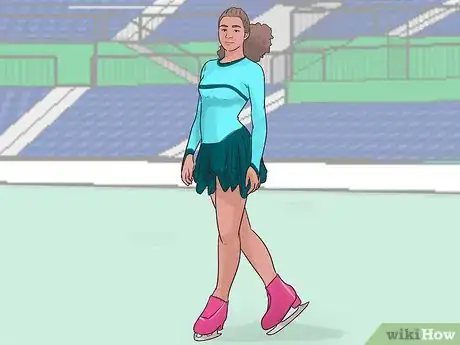

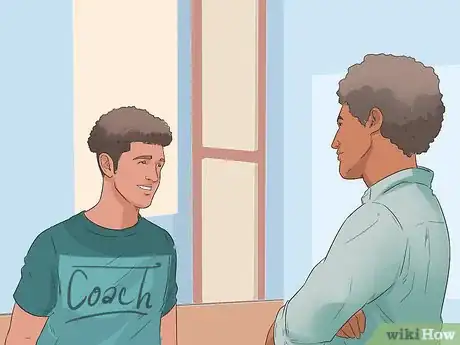
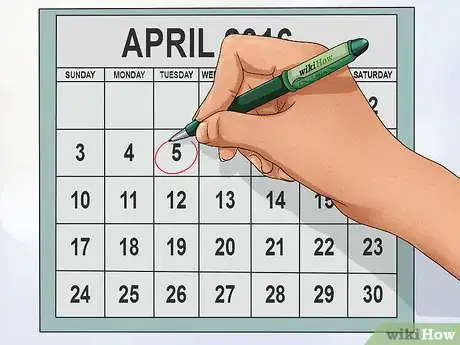
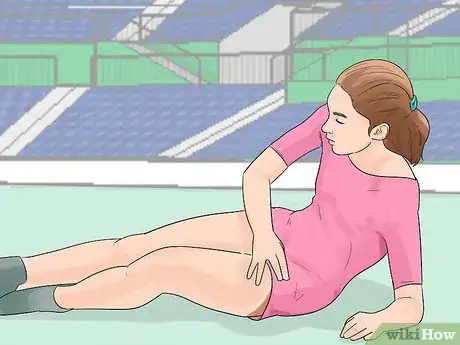

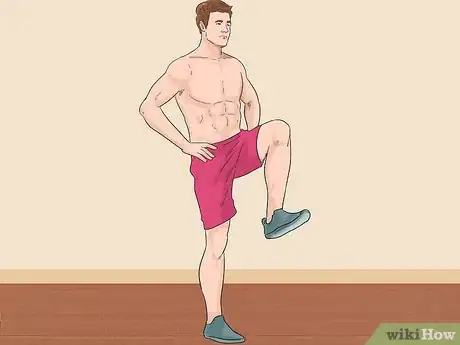

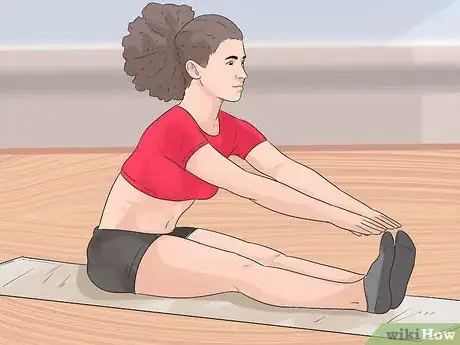
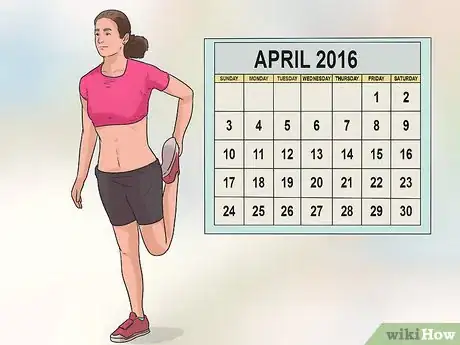
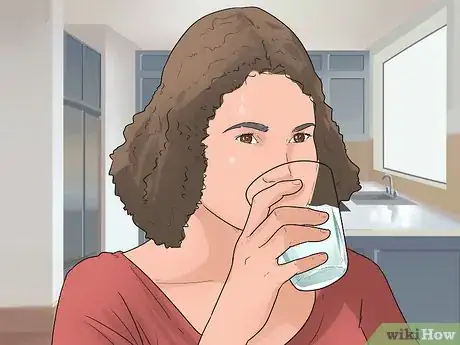
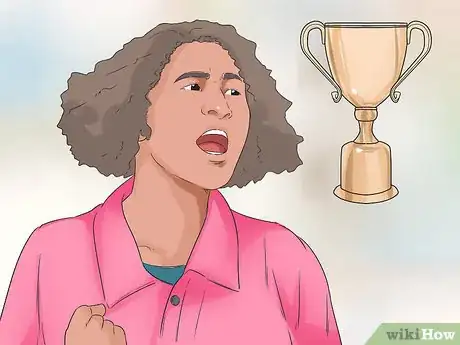

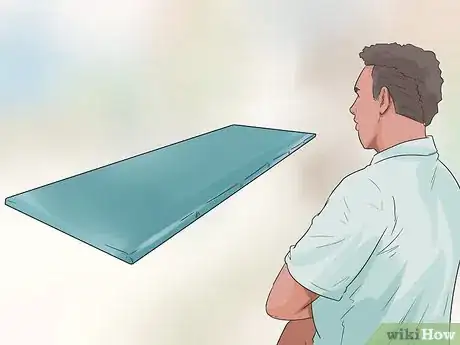
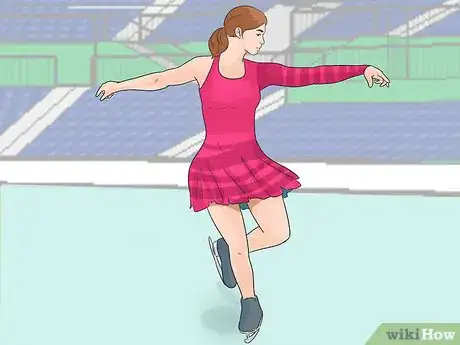

-Step-14.webp)

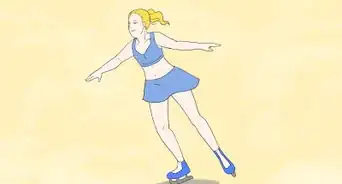
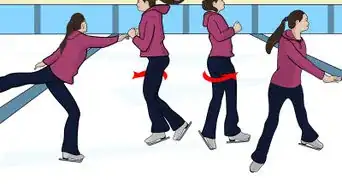
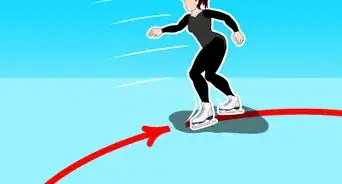
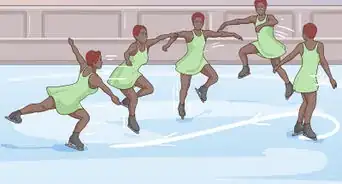

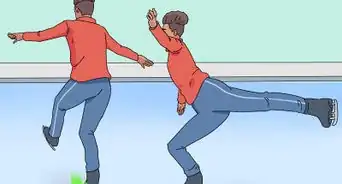
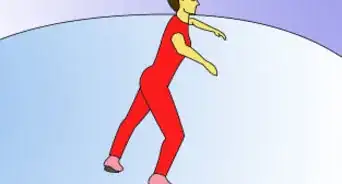










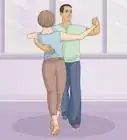
-Step-14.webp)

